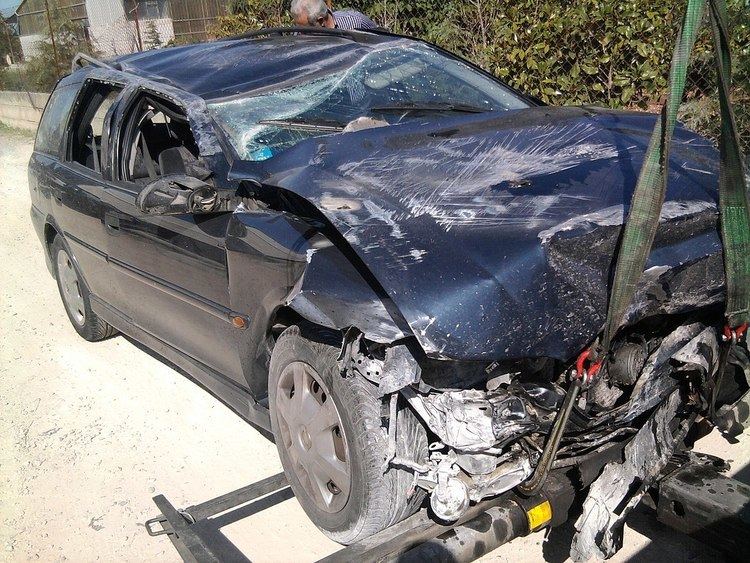 | ||
A multiple vehicle collision (colloquially known as a multi-car collision, multi-vehicle collision, pile-up, chain-reaction crash, or simply a multi) is a road traffic accident involving many vehicles. Generally occurring on high-capacity and high-speed routes such as freeways, they are one of the deadliest forms of traffic accidents. The most disastrous pile-ups have involved more than a hundred vehicles.
Contents
Causes
Pile-ups generally occur in low-visibility conditions as drivers on freeways are sometimes caught out by driving too close to the vehicle in front and not adjusting to the road conditions.
Chain-reaction crashes can also occur in conditions of good visibility, when black ice or other road hazards are encountered unexpectedly as drivers round a curve or crest a hill.
Another possibility is a third vehicle is simply too close to the initial collision to avoid hitting one or both of the vehicles. Due to the high traffic speeds on the road, if one car develops a problem and suddenly halts, those behind it cannot stop in time and may hit it. Considering that these roads often have high traffic volumes, more cars are forced into braking and skidding, darting into other lanes and in front of oncoming traffic and so more vehicles become involved, creating a chain reaction effect.
Determining the cause of such accidents is difficult for investigators and it is often impossible to tell if negligence caused the crash. In spite of their frequency, little formal research has been done in the United States regarding their cause or causes.
Effects
Multiple-vehicle collisions are particularly deadly as the mass of crumpled vehicles makes escape for survivors difficult. Even if survivors are able to exit their vehicles, other cars may strike them. Individual vehicles in a multiple-vehicle collision are often hit multiple times at high speed, increasing the risk of injury to passengers who may have survived the first impact with the benefit of now-discharged protective airbags. Collisions after the initial collision may occur from the side of the vehicle, where the passenger compartment is more vulnerable.
A fire in one part of the accident can quickly spread via spilled gasoline and cover the entire crash area. Multiple-vehicle collisions can also overwhelm local firefighting, ambulance, and police services making speedy rescues more difficult. If the accident takes place in a remote area, getting medical help to the scene can be a daunting task.
The destruction and intense heat of fires can also damage roadways, particularly by melting and burning the asphalt or spalling concrete surfaces. The structural steel of bridges and overpasses can also be weakened by the heat. A fiery pileup inside a tunnel is the most serious, as there is little means to escape the poisonous fumes, and the confined heat may damage structural supports.
The large scale of these accidents can close important highway routes for several days, or even longer if highway support structures are damaged.
Motorsports
Multiple vehicle collisions can occur in the restricted courses used in motorsports as well, most commonly after a green flag (on road courses) being waved following a warm-up lap during the start of the race. Reporters and fans apply subjective guidelines as to what threshold needs to be crossed before a simple on-track incident can be described as such. NASCAR fans, for example, talk about the "Big One", where many cars can be or are involved in a wreck while running close together.
